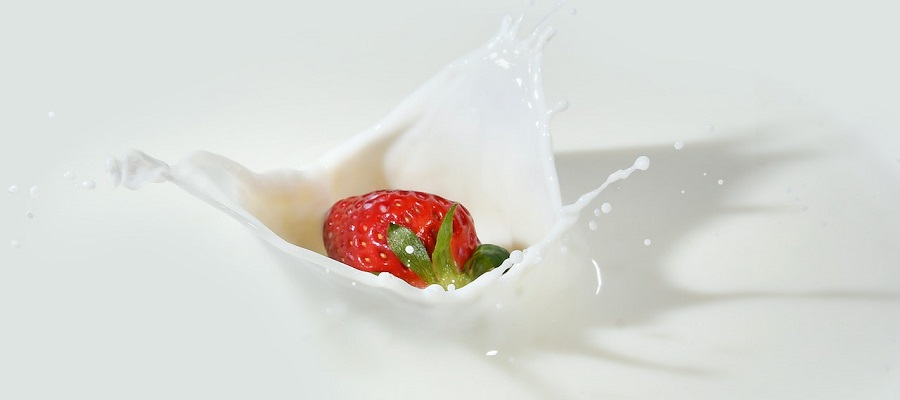The dairy industry is a large and complex sector that involves the production, processing, and distribution of milk and milk products. Dairy farms raise cows or other milk-producing animals and collect their milk, which is then processed into a variety of products such as milk, cheese, butter, yogurt, and ice cream.
The dairy industry plays a significant role in many countries' economies and is a major source of employment in rural areas. It is also an important part of the global food system, as milk and milk products are a vital source of nutrition for people around the world.
However, the dairy industry has also faced criticism for issues such as animal welfare, environmental impacts, and sustainability. Many people are also lactose intolerant, meaning they cannot digest milk and milk products, which has led to the growth of alternative dairy-free products made from plants such as almonds, soy, and oats.
Overall, the dairy industry is a complex and multifaceted sector that has both economic and cultural significance around the world.
What are the breeds of dairy cows?
There are many different breeds of dairy cows, each with their own unique characteristics. Some of the most common dairy cow breeds include:
-
Holstein: This is the most popular breed of dairy cow in the United States and is known for its high milk production. Holsteins are black and white in color and have distinctive markings.
-
Jersey: Jerseys are a smaller breed of dairy cow and are known for their high butterfat content in their milk. They are usually brown in color and are popular in the dairy industry due to their efficient milk production.
-
Brown Swiss: Brown Swiss cows are a large breed known for their hardiness and longevity. They produce milk with a high protein content and are often used in cheese production.
-
Guernsey: Guernseys are a medium-sized breed of dairy cow known for their golden-red color and their high-quality milk. Their milk has a high butterfat content and a distinctive flavor.
-
Ayrshire: Ayrshires are a red and white breed of dairy cow known for their hardiness and ability to adapt to various environments. They produce milk with a high protein and butterfat content.
These are just a few examples of the many different breeds of dairy cows found around the world.
What is the dairy milk production process?
The dairy milk production process involves several steps, including:
-
Milk production: Dairy cows are milked by hand or using milking machines. The milk is collected in a clean and sanitized container and stored in a cool place to prevent spoilage.
-
Transportation: The milk is then transported from the farm to a processing facility, where it is pasteurized to kill any harmful bacteria.
-
Pasteurization: During pasteurization, the milk is heated to a high temperature for a short period of time and then rapidly cooled to prevent bacterial growth. There are several methods of pasteurization, including high-temperature short-time (HTST) pasteurization and ultra-high temperature (UHT) pasteurization.
-
Homogenization: Homogenization is the process of breaking down the fat globules in milk so that they are evenly distributed throughout the milk. This helps to prevent the cream from separating and rising to the top of the milk.
-
Standardization: Standardization is the process of adjusting the fat content of the milk to a consistent level. This is usually done by adding or removing cream.
-
Packaging: The milk is then packaged in containers such as jugs, cartons, or bottles and transported to stores or distribution centers for sale to consumers.
The dairy milk production process may also involve additional steps such as quality testing, flavoring, and the production of milk products such as cheese, butter, and yogurt.
dairy milk vs. almond milk environmental impact
The environmental impact of dairy milk and almond milk can vary depending on a variety of factors, such as the specific production methods used and the location of the farms. Here are a few key points to consider when comparing the environmental impact of dairy milk and almond milk:
-
Water usage: Almond milk requires more water to produce than dairy milk. Almond trees need a significant amount of water to grow, and irrigation is often necessary to keep the trees hydrated. In contrast, dairy cows consume a large amount of water as part of their diet, but this water is typically sourced from natural sources such as rain or irrigation runoff.
-
Land use: Dairy milk production requires more land than almond milk production. Dairy cows need pastureland to graze on, while almond trees can be grown in a smaller area.
-
Carbon footprint: Dairy milk production generates more greenhouse gas emissions than almond milk production. Cows produce methane, a potent greenhouse gas, as part of their digestion process, while almond trees absorb carbon dioxide as they grow. However, it is worth noting that the carbon footprint of almond milk can vary depending on the specific production methods used and the distance the almonds have to be transported.
Overall, both dairy milk and almond milk have environmental impacts, and it is important to consider the full lifecycle of these products when evaluating their environmental impact.
What are dairy-free milk alternatives?
Dairy-free milk alternatives are plant-based beverages that are made from ingredients such as nuts, seeds, grains, or legumes. They are suitable for people who are lactose intolerant, allergic to milk proteins, or who follow a vegan diet. Some examples of dairy-free milk alternatives include:
-
Almond milk: Made from ground almonds and water, almond milk has a nutty flavor and is relatively low in calories. It is also rich in vitamins and minerals such as vitamin E and calcium.
-
Soy milk: Made from ground soybeans and water, soy milk has a creamy texture and a slightly nutty flavor. It is high in protein and has a similar nutritional profile to cow's milk.
-
Oat milk: Made from oats and water, oat milk has a creamy and slightly sweet flavor. It is a good source of fiber and is often fortified with vitamins and minerals.
-
Coconut milk: Made from the flesh of coconuts and water, coconut milk has a rich, creamy texture and a slightly sweet, tropical flavor. It is high in saturated fat and is not a good source of protein.
-
Rice milk: Made from ground rice and water, rice milk is a good choice for people with allergies to nuts, soy, and gluten. It has a thin, watery consistency and a slightly sweet flavor.
There are many other dairy-free milk alternatives available, including hemp milk, cashew milk, and pea milk. These alternatives can be used in the same way as cow's milk, such as in coffee, cereal, or baking.
What are the health benefits of dairy protein powder?
Dairy protein powders are a convenient and easy way to increase your intake of protein, which is an essential nutrient that is important for a variety of functions in the body. Some of the potential health benefits of dairy protein powder include:
-
Building and repairing muscles: Protein is an important component of muscle tissue, and consuming adequate amounts of protein can help support muscle growth and repair. This can be particularly beneficial for athletes or people who engage in regular resistance exercise.
-
Weight management: Protein can help to regulate appetite and reduce cravings for unhealthy snacks. It may also help to increase feelings of fullness, which can aid in weight management.
-
Bone health: Dairy protein powders are a good source of calcium, which is important for bone health. Adequate calcium intake can help to prevent bone loss and reduce the risk of osteoporosis, especially in older adults.
-
Blood sugar control: Some studies have suggested that protein may help to regulate blood sugar levels and improve insulin sensitivity. This could potentially have benefits for people with diabetes or at risk of developing diabetes.
It is worth noting that dairy protein powders are not suitable for everyone, as some people may be lactose intolerant or allergic to milk proteins. It is always a good idea to consult with a healthcare professional before adding any new supplement to your diet.
what are dairy industry sustainability practices?
Sustainability practices in the dairy industry refer to efforts to reduce the environmental impact of milk production and processing while also considering the long-term economic viability of the industry. Some examples of sustainability practices in the dairy industry include:
-
Water conservation: This may involve implementing drip irrigation systems, using rainwater harvesting systems, or using more efficient irrigation techniques to reduce water usage on dairy farms.
-
Waste management: This may involve implementing practices to reduce the amount of waste produced on dairy farms, such as recycling manure as fertilizer, or using waste as a source of biogas to generate electricity.
-
Energy efficiency: This may involve using renewable energy sources such as solar panels or wind turbines to power dairy operations, or implementing energy-efficient technologies such as LED lighting or energy-efficient refrigeration systems.
-
Sustainable livestock practices: This may involve implementing animal welfare standards to ensure that dairy cows are treated humanely, or using feed and forage management techniques that are environmentally sustainable.
-
Sustainable land use: This may involve using sustainable land management practices such as cover cropping or crop rotation to improve soil health and reduce the need for chemical fertilizers and pesticides.
Implementing sustainability practices can help to reduce the environmental impact of the dairy industry and ensure that it is able to operate in a responsible and sustainable manner for the long term.


